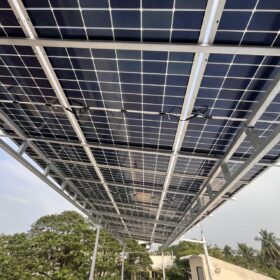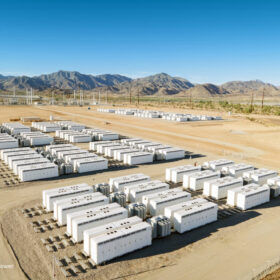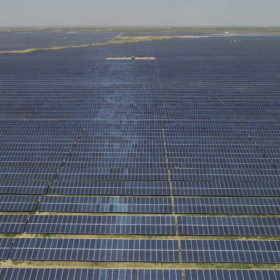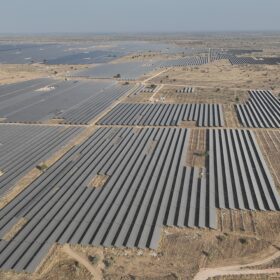PM Surya Ghar Muft Bijli Yojana crosses 10 lakh installation milestone
PM Surya Ghar: Muft Bijli Yojana (PMSGMBY), the world’s largest domestic rooftop solar initiative, has achieved a historic milestone with 10 lakh homes now solar-powered as of 10th March 2025.
How advanced battery technologies are transforming solar energy storage
The energy storage market is rapidly evolving with cutting-edge battery technologies leading the way. Ongoing advancements are improving lithium batteries’ safety and longevity, further solidifying their position as the preferred choice for solar energy storage systems. Other promising developments are solid-state batteries, flow batteries, and sodium-ion batteries.
Turning climate commitments into competitive advantages: How businesses can benefit from sustainability
The best businesses aren’t just adapting to the changing landscape; they’re leveraging sustainability to drive innovation, reduce costs, and build stronger relationships with their customers and stakeholders. Business leaders are turning sustainability into a growth driver rather than a cost center by adopting the right practices.
CERC adopts tariff for SECI’s 1.2 GW ISTS-connected solar PV power projects with energy storage systems
The tariff adoption by Central Electricity Regulatory Commission (CERC) is a critical regulatory requirement under the Electricity Act and power purchase agreements. It provides regulatory certainty to the entire bidding process and ensures the sanctity of the discovered tariff, paving the way for the successful bidders to proceed with project execution and financial closure.
Polysilicon market unchanged, awaits policy stimulus
In a new weekly update for pv magazine, OPIS, a Dow Jones company, provides a quick look at the main price trends in the global PV industry.
The role of battery energy storage systems in sustainable data centers
While many data centres have started using solar power as part of their energy sources, they still depend on grid energy because of regulatory issues like discom regulations and banking policies. To enhance the use of green energy and lessen reliance on fossil-fuel-based grid electricity, combining battery energy storage systems (BESS) with hybrid solar and wind power systems is a practical solution.
Solar manufacturing in India: Paving the way for a self-reliant renewable future
As India advances toward its Vision 2047 goals, solar module and cell manufacturing must be at the heart of the renewable energy strategy. While policy interventions like ALMM and production-linked incentives have laid a strong foundation, the next phase requires intensifying domestic raw material manufacturing and supply chains, scaling solar cell production with novel technologies, developing a skilled workforce to support advanced manufacturing, and elevating export competitiveness through quality certifications and trade agreements.
CERC adopts tariff for SECI’s 1.2 GW wind-solar hybrid power projects with assured peak power supply under Tranche VI
The wind-solar hybrid power projects were awarded to four successful bidders at tariffs ranging from INR 4.64/kWh to INR 4.73/kWh.
Global solar module prices largely stabilize with upward momentum
In a new weekly update for pv magazine, OPIS, a Dow Jones company, provides a quick look at the main price trends in the global PV industry.
The role of ESG SaaS platforms in accelerating the energy transition
Leveraging artificial intelligence, automation, and real-time data, ESG SaaS (software-as-a-service) systems enable companies to optimize energy use, enable and enhance transparency, and comply with regulatory requirements.















